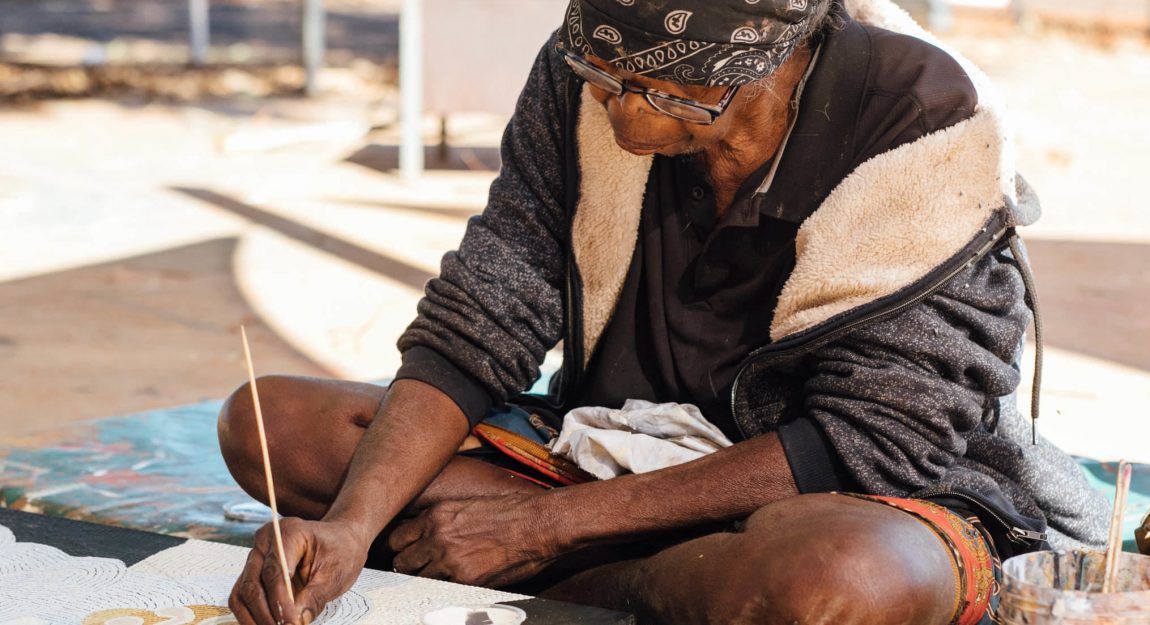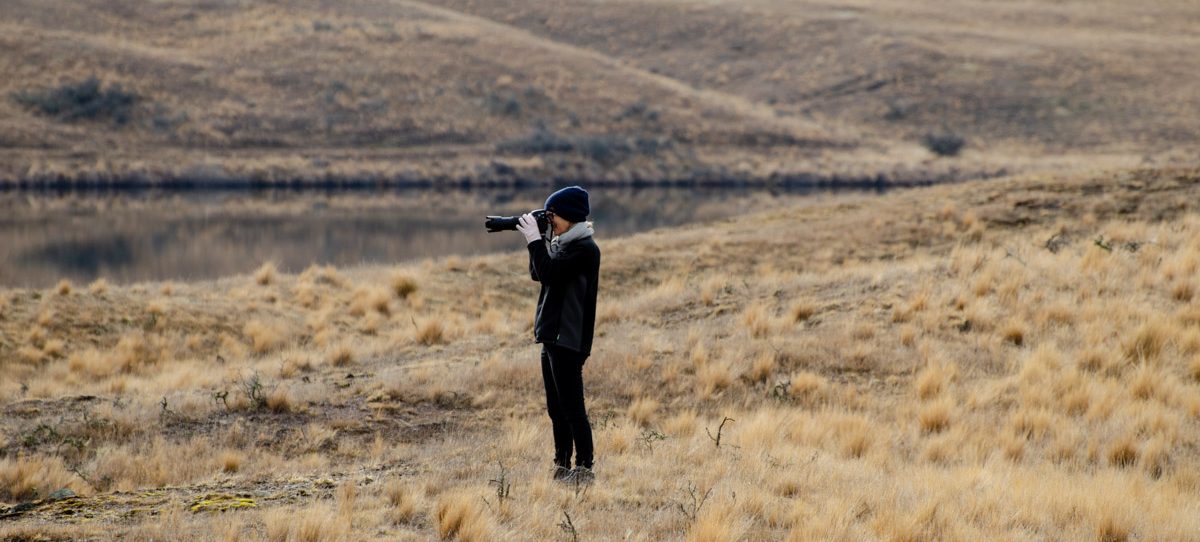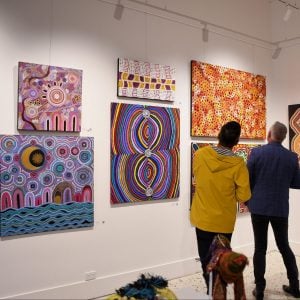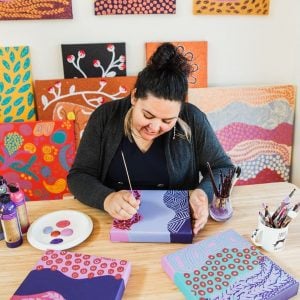Celebrating NAIDOC Week: Emily Andy Napaltjarri
As an important part of the Australian calendar, NAIDOC Week (7 – 14 July) celebrates the history, culture and achievements of Aboriginal and Torres Strait Islander peoples. Each year, a theme is chosen by NAIDOC (National Aborigines and Islanders Day Observance Committee); 2019 explores the theme of Voice, Treaty and Truth. To join in the celebrations, this week we’re highlighting the achievements and talent of Emily Andy Napaltjarri from Papunya Tjupi Arts, one of the Indigenous art centres right at the very heart of Bluethumb’s mission.
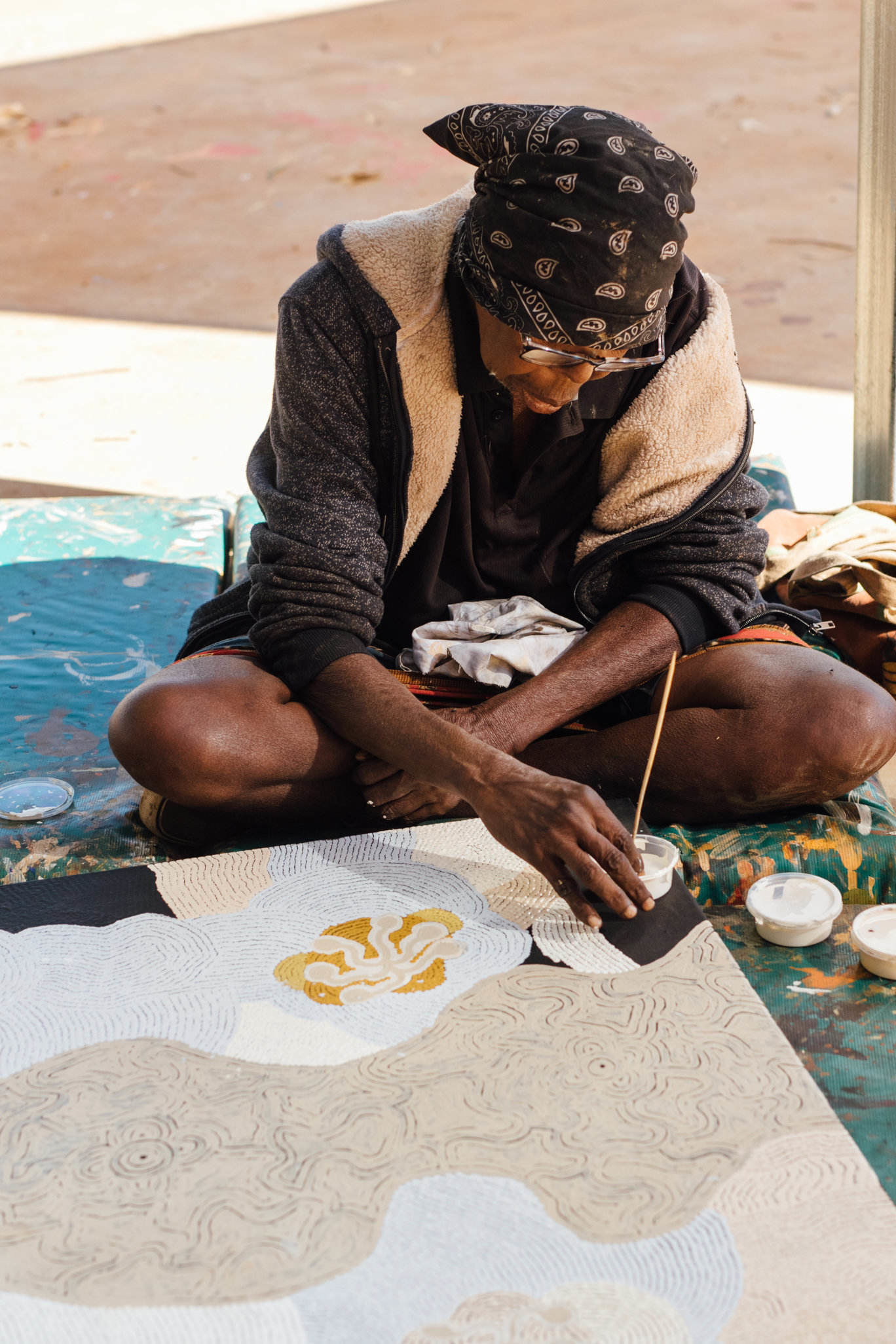
Emily Andy Napaltjarri of Papunya Tjupi Arts shows consistent skill and craftsmanship through her personal storytelling
Rising star Emily has been painting since Papunya Tjupi Arts Centre opened its doors in 2007, making her one of the centre’s senior artists. Whilst she learnt the fundamentals of her painting techniques from her mother, another recognised artist at Warumpi Arts, Emily is considered to have stepped into her own, using a self-driven sense of intuition and talent in her work. In the past two years alone, we’ve seen Emily’s skill increasingly acknowledged and celebrated by others, including a feature in Outstation’s Rising Stars exhibition in 2017.
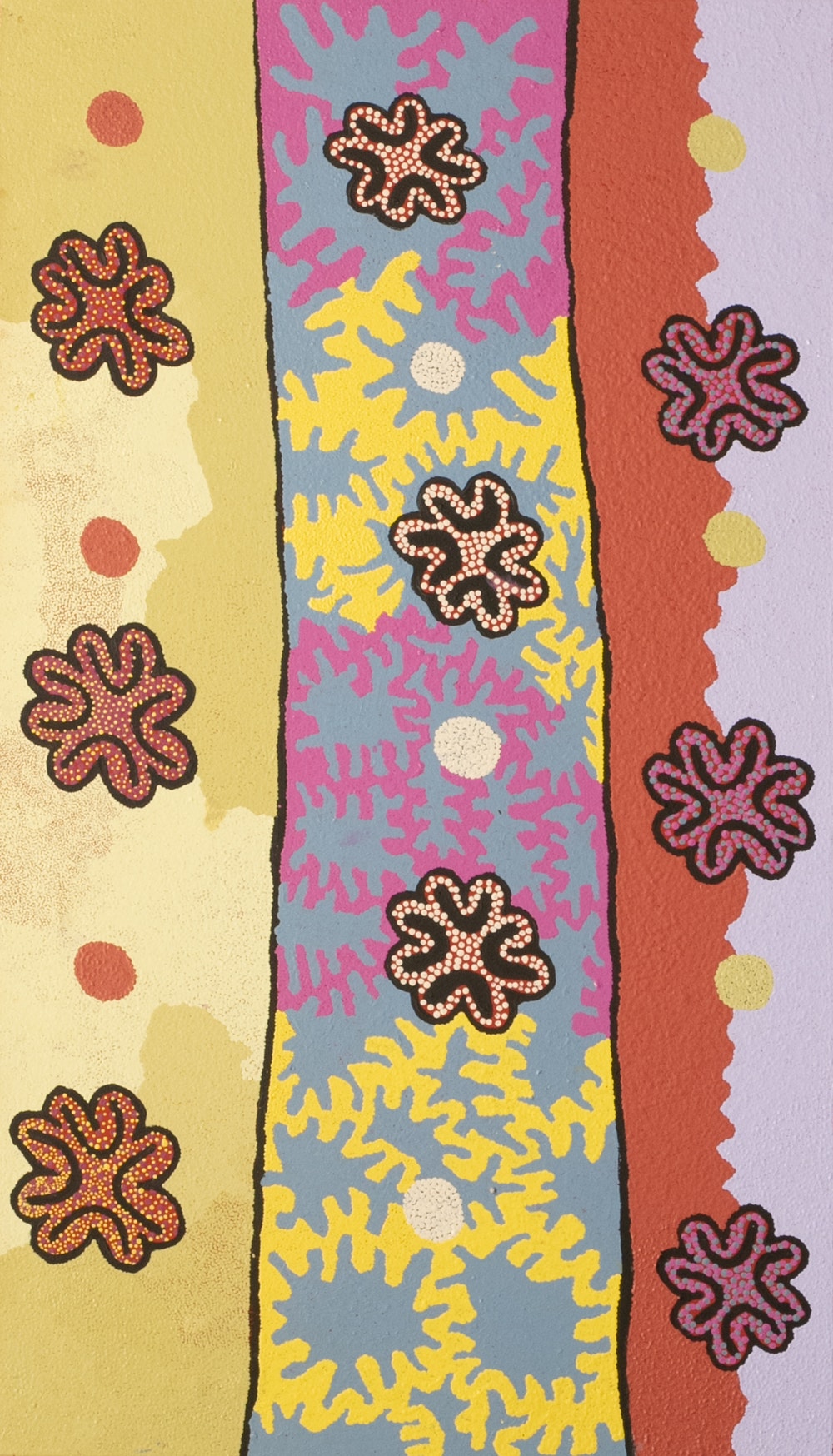
Emily Andy Napaltjarri frequently relate to her Dreaming and the Dreaming site Karrinyarra, a two-hour drive from the Papunya community which Emily is part of
Like most in Indigenous communities, Emily’s family origins bolster a huge part of her identity. Her ties to her community run deep, and as a respected Elder, she is a custodian of a number of women’s Dreaming stories. Her own Dreaming relates to a Bush Onion story, which has resulted in the story becoming commonplace in her work. Consequently, her designs often depict the Janmarda Tjukurrpa (Onion Dreaming) site of Karrinyarra (Central Mt Wedge).

Emily Andy Napaltjarri tells the story of her Country which she paints
“We would always go hunting. We would go to Karrinyarra for Bush Onion. We lived out where 3 mile is now, in the early days. There was no house. We would always go Karrinyarra for bush onion and rabbit. We would stop there when I was a little girl and camp there. After school, we might go there for a holiday, maybe for 1 week with family. My grandmother, grandfather and everybody. After we went camp out, we got some bush tucker and bush onion. We would go hunting for rabbit and bush meat… Walk all that way on foot. It would maybe take 2 days. After eating bush tucker we would get some water and camp there. The women would dig for water and get the water at the waterhole Kumanpa. We would teach and learn songs at this place too, and the women would wear white headbands and feathers for dancing. We would be with all the Kungkas (women) Nampajimpa, Nangala, Nungarrayi, Napurrula, Napaljarri, Napangardi, Napanangka, Nakamarra…”
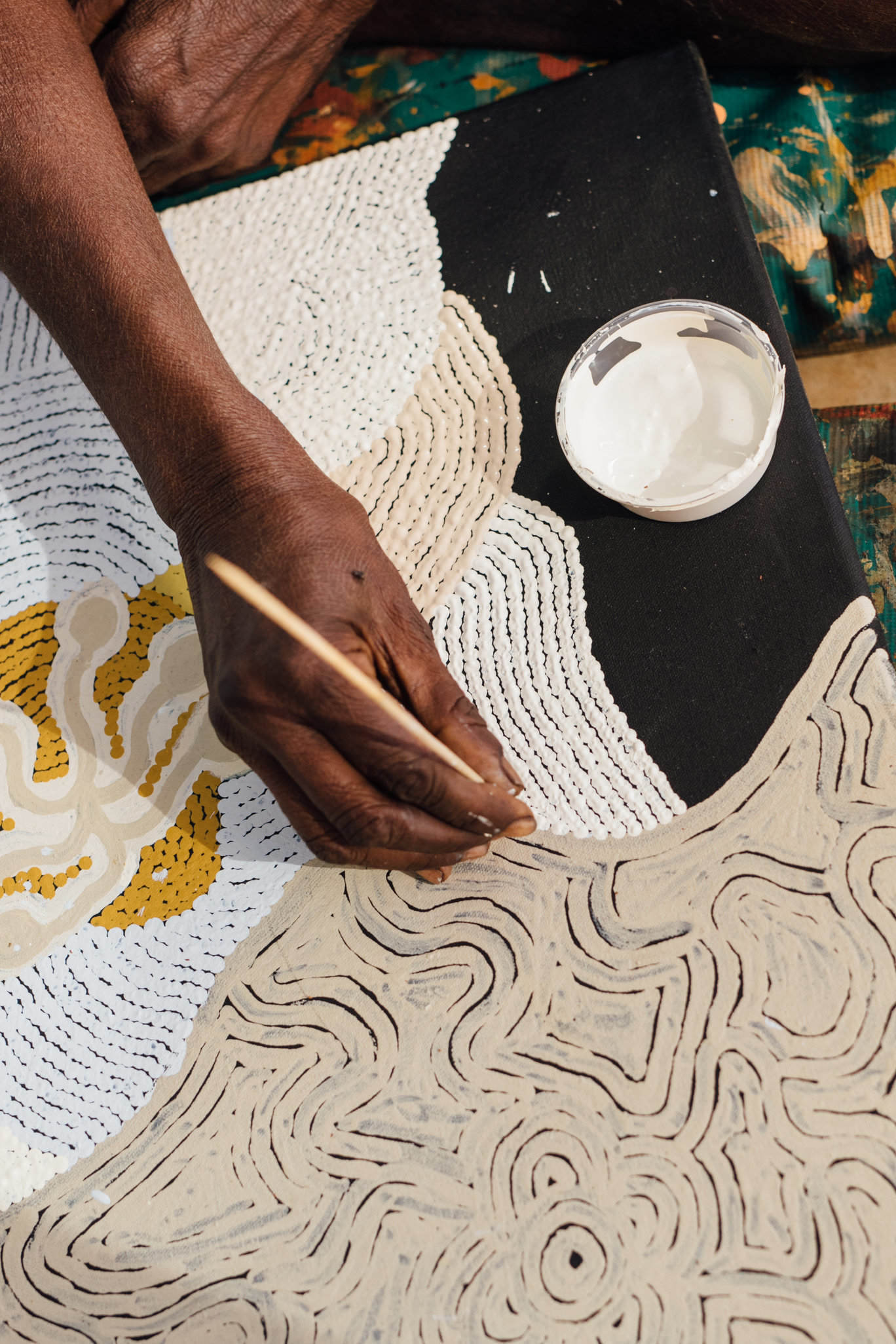
Emily’s meticulous hand-drawn and dotted mark remains unparalleled within Papunya Tjupi Arts Centre
Although Emily is by no means new to the art centre or to the traditional techniques behind Aboriginal art, it’s relatively recent that she’s been making a name for herself. Her strong lines, intricate dotted mark and overall attention to detail show a capability that surpasses most. What’s more, the stories Emily depicts through her work about Janmarda Tjukurrpa and Karrinyarra are regarded as important knowledge to pass on and just as relevant today as they always have been.
During this week that honours the culture and community of Aboriginal and Torres Straight Islanders, we invite you to explore some favourite recent artworks by Bluethumb’s Aboriginal artists and art centres. Click here for our NAIDOC Week curation, or discover the full collection of Aboriginal art here.

